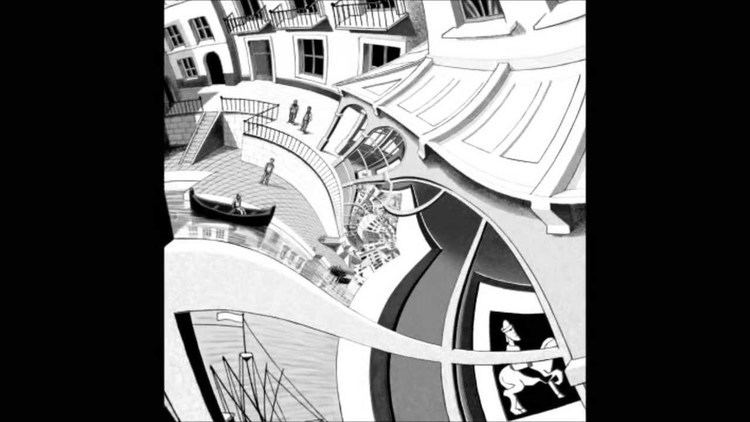Artist M. C. Escher Created 1956 | Period Surrealism | |
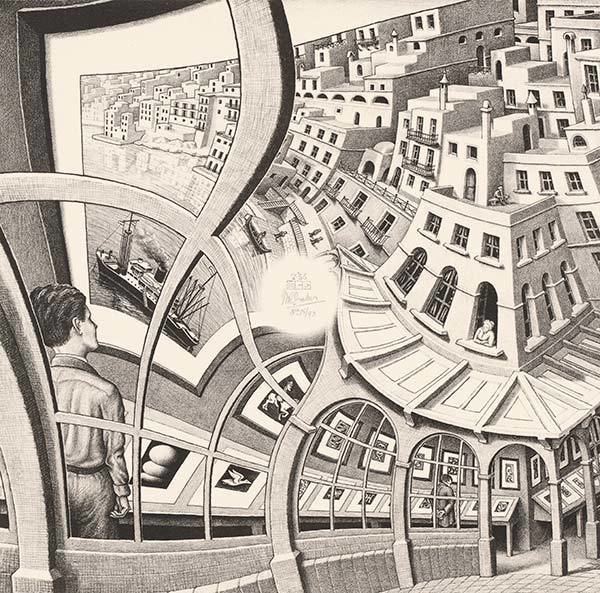 | ||
Similar M C Escher artwork, Surrealist artwork | ||
Print Gallery (Dutch: Prentententoonstelling) is a lithograph printed in 1956 by the Dutch artist M. C. Escher. It depicts a man in a gallery viewing a print of a seaport, and among the buildings in the seaport is the very gallery in which he is standing. The lithograph has attracted discussion in both mathematical and artistic contexts.
Contents
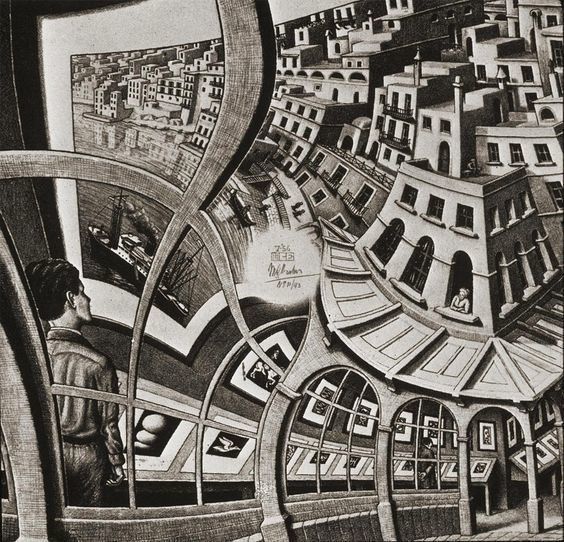
Origins
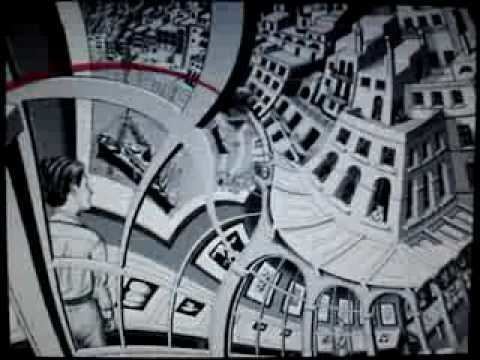
Bruno Ernst cites M. C. Escher as stating that he began Print Gallery "from the idea that it must be possible to make an annular bulge, a cyclic expansion ... without beginning or end." Escher attempted to do this with straight lines, but intuitively switched to using curved lines which make the grid expand greatly as it rotates.
Seeming paradox
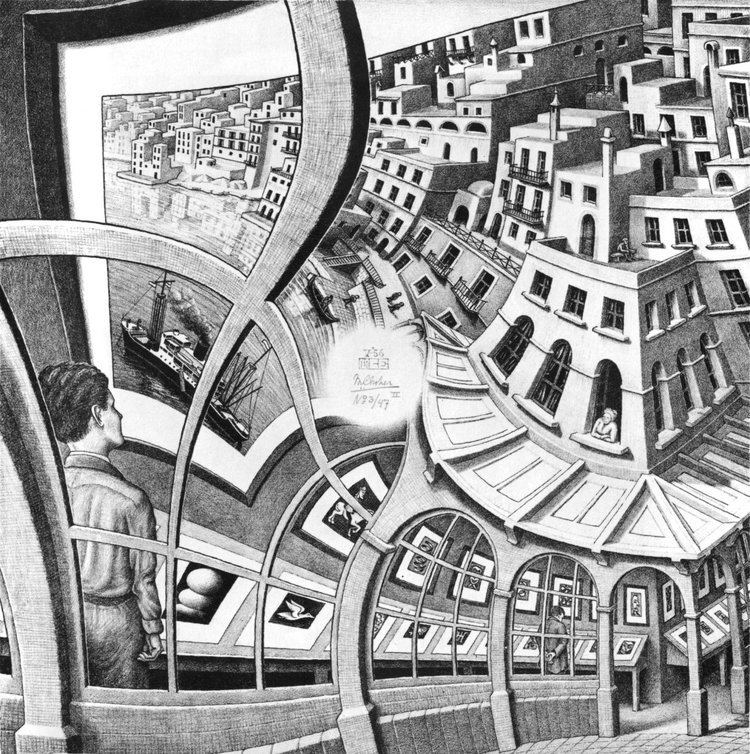
In the book Gödel, Escher, Bach, Douglas Hofstadter explains it as a strange loop showing three kinds of "in-ness": the gallery is physically in the town ("inclusion"); the town is artistically in the picture ("depiction"); the picture is mentally in the person ("representation").
Possible Droste effect
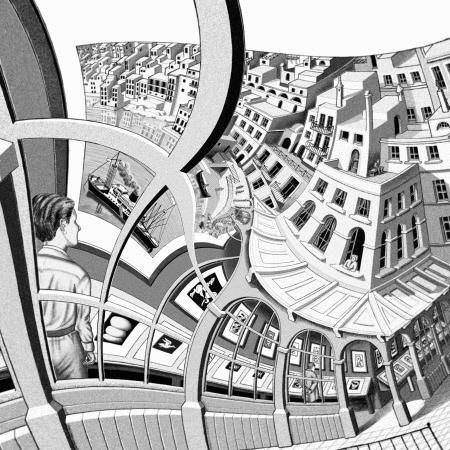
Escher's signature is on a circular void in the center of the work. In 2003, two Dutch mathematicians, Bart de Smit and Hendrik Lenstra, reported a way of filling in the void by treating the work as drawn on an elliptic curve over the field of complex numbers. They deem an idealized version of Print Gallery to contain a copy of itself (the Droste effect), rotated clockwise by about 157.63 degrees and shrunk by a factor of about 22.58. Their website further explores the mathematical structure of the picture.
Post-modernism
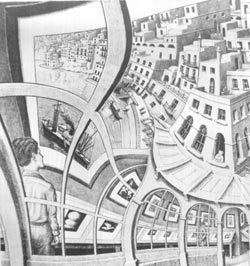
Print Gallery has been discussed in relation to post-modernism by a number of writers, including Silvio Gaggi, Barbara Freedman, Stephen Bretzius, and Marie-Laure Ryan.
